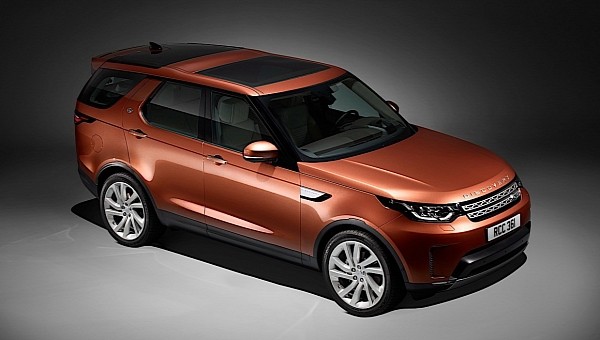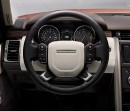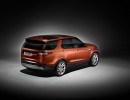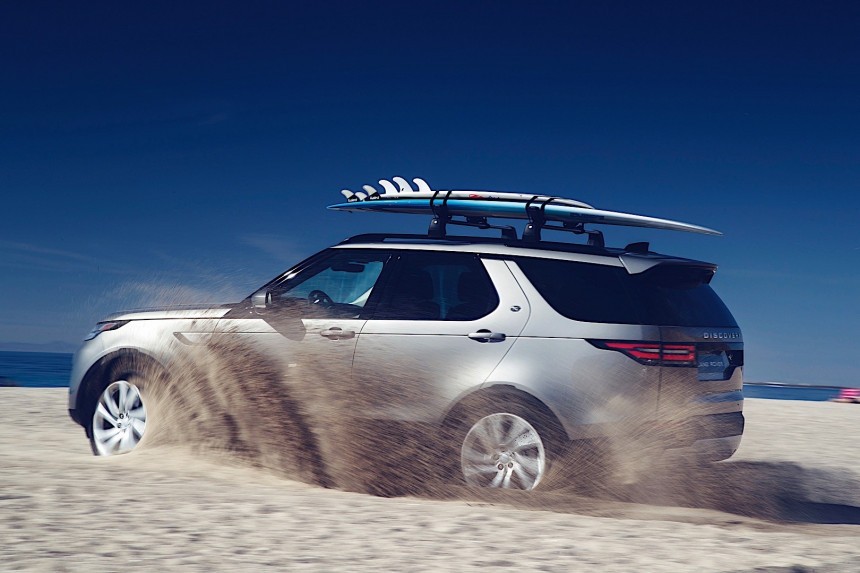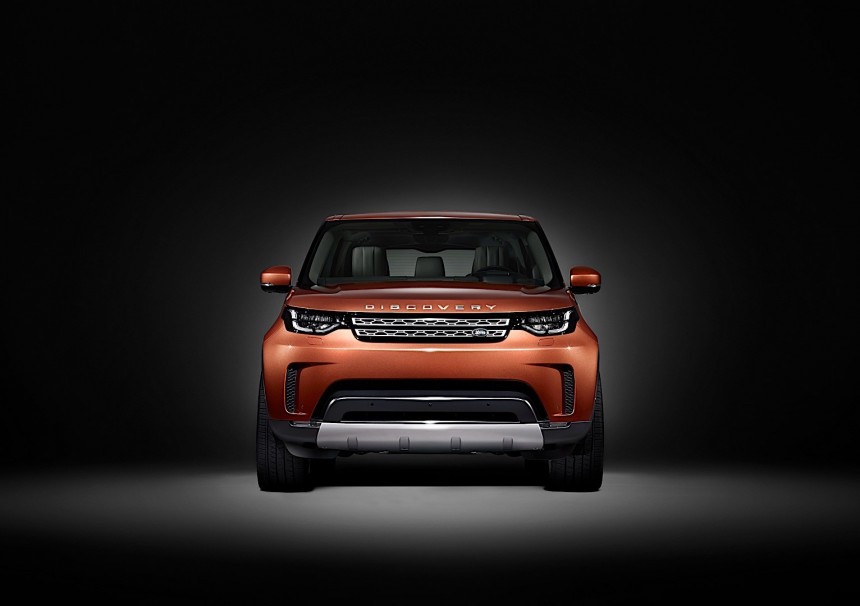What are Land Rover products best known for? If you ask enthusiasts of the brand (and there are plenty of them), they'll say it's making pretty darn good off-roaders straight out of the box. If you ask anyone else, they'll say it is their dreadful reliability record. Both parties can mount a strong argument for their case, so it's best we settle for a coin flip.
To be fair, though, the name itself is a straight giveaway. Launched as a subsidiary of the Rover Company (now defunct), the Land Rover moniker told you all you needed to know about what to expect from these vehicles. Adding the "Land" prefix somehow suggests that all other Rover products were actually missing a prefix of their own - with "Road Rover" being the most likely option. However, that's not something you'll find in any history book, but rather just something I came up with right now.
After its debut in the late 1940s, the brand quickly rose to fame. Being the boggy mess it is, especially after the war, Britain definitely needed a no-fuss vehicle capable of dealing with mud, rough roads, or even no roads at all, and Land Rover's Series I proved to be the solution.
Fast forward a few decades, and the now stand-alone hyphenless Land Rover brand has several models to its name, all still little more than basic workhorses. It's actually in 1989 that Land Rover launches its first vehicle aimed at a wider public - non-farmers, for starters - in a move that greatly predates the SUV craze we were yet to experience. They call it the "Discovery", and its main purpose is to cover a gap left by the Range Rover as it moved higher up the market.
Due to its ties with the original Series I and the reputation it gained over time by itself, the Defender nameplate will always carry the most weight with Land Rover, but there's no denying the brand owes its success to the Discovery range at least in equal measure. In fact, you might say one is responsible for building the company's name and image, while the other, its finances.
Following its release, the Discovery went from strength to strength following an algorithm that may seem odd on paper, but appears to have worked: only bring significant changes to the car every other generation. Following this recipe, Land Rover found itself in 2014 with a fourth-gen Discovery (known as LR4 in North America) that was basically a revamped third-gen model kitted with more technology and slightly improved engines. As great as the Disco 4 was, there was no hiding its age. So, with plans to release a new iteration in a few years, Land Rover introduced the Discovery Vision Concept ahead of that year's New York Auto Show.
Sporting some of the design elements already seen on the Range Rover Evoque, the Discovery Vision Concept was very well received by the public. It was, by all means, a beautiful SUV, unlike anything the world had seen before and definitely different from any previous Land Rover badge-wearing vehicles.
Then, three years later, Land Rover did something unexpected. It launched the fifth generation Discovery looking as identical to the concept as possible without being the very same car. The British company (Indian-owned by that time) did what, much to the chagrin of the wider public, very few manufacturers can brag about: it turned one of its concepts into a production model with close to zero modifications. If that's not a recipe for success, then I don't know what is.
Well, it turns out a lot of those commending the company for its bold design were half-relying on the production version to go through the usual "normalization" process. "What, you mean that wasn't just a fantasy concept? You expect us to buy it, now? Oh, I see... I'm sorry, but I just remembered I left something on the stove. Gotta go. Catch you later!"
Like the guy who never did something wrong, but is still deserted by all of his friends, Land Rover was left wondering what happened. People started coming up with reasons why the car didn't look right, and things went as far as the model's designer coming out and openly defending the styling.
In reality, though, it wasn't just the SUV's appearance as a more general departure from everything that made the Discovery great. Not only did the 5 leave behind a host of iconic features (not having a split tailgate was a crime), but those that were carried over didn't feel genuine. It was like they were there just to tick some boxes in a presentation.
Land Rover wanted to move the nameplate on into a different segment of the market, but in doing so it ended up competing with the much more attractive Range Rover, and it never stood a chance. By losing their practical nature, the more affordable Discoveries felt like generic SUVs, whereas the expensive ones felt like cheap, less desirable Range Rovers. Either way, there was no point in buying one.
Regardless of how big of a flop it was (and still is), the Discovery 5 does have a big merit: it signaled the company was serious about the new design direction. When the Range Rover Evoque came out, there were questions about whether the styling would be carried over to the larger vehicles, and the Discovery 5 proved that it would. It also showed it didn't necessarily guarantee success or, indeed, a beautiful car, but it did set the tone for all the other models that were to follow.
Look at where the company is now. News just came out that Jaguar Land Rover has a backlog of over 200,000 orders. Indeed, go to your local dealership and tell them you want a new Range Rover, and they'll tell you the waiting times are over one year long. It's the same story with the new Range Rover Sport, whereas the new Defender, the model that pretty much filled the hole left by the fall from grace of the Discovery, is also in high demand.
After a few years of turmoil, the company is yet again on an upward trajectory. What does that mean for the Discovery? Well, Land Rover is well aware of how the other models are munching on Disco's market share, so it has a plan. Whatever it is, it's going to have to be really special to erase the memory of this current generation: the car everyone wanted when the concept was unveiled, but nobody bought once the nearly identical production version came out.
After its debut in the late 1940s, the brand quickly rose to fame. Being the boggy mess it is, especially after the war, Britain definitely needed a no-fuss vehicle capable of dealing with mud, rough roads, or even no roads at all, and Land Rover's Series I proved to be the solution.
Fast forward a few decades, and the now stand-alone hyphenless Land Rover brand has several models to its name, all still little more than basic workhorses. It's actually in 1989 that Land Rover launches its first vehicle aimed at a wider public - non-farmers, for starters - in a move that greatly predates the SUV craze we were yet to experience. They call it the "Discovery", and its main purpose is to cover a gap left by the Range Rover as it moved higher up the market.
Due to its ties with the original Series I and the reputation it gained over time by itself, the Defender nameplate will always carry the most weight with Land Rover, but there's no denying the brand owes its success to the Discovery range at least in equal measure. In fact, you might say one is responsible for building the company's name and image, while the other, its finances.
Sporting some of the design elements already seen on the Range Rover Evoque, the Discovery Vision Concept was very well received by the public. It was, by all means, a beautiful SUV, unlike anything the world had seen before and definitely different from any previous Land Rover badge-wearing vehicles.
Then, three years later, Land Rover did something unexpected. It launched the fifth generation Discovery looking as identical to the concept as possible without being the very same car. The British company (Indian-owned by that time) did what, much to the chagrin of the wider public, very few manufacturers can brag about: it turned one of its concepts into a production model with close to zero modifications. If that's not a recipe for success, then I don't know what is.
Well, it turns out a lot of those commending the company for its bold design were half-relying on the production version to go through the usual "normalization" process. "What, you mean that wasn't just a fantasy concept? You expect us to buy it, now? Oh, I see... I'm sorry, but I just remembered I left something on the stove. Gotta go. Catch you later!"
Like the guy who never did something wrong, but is still deserted by all of his friends, Land Rover was left wondering what happened. People started coming up with reasons why the car didn't look right, and things went as far as the model's designer coming out and openly defending the styling.
In reality, though, it wasn't just the SUV's appearance as a more general departure from everything that made the Discovery great. Not only did the 5 leave behind a host of iconic features (not having a split tailgate was a crime), but those that were carried over didn't feel genuine. It was like they were there just to tick some boxes in a presentation.
Land Rover wanted to move the nameplate on into a different segment of the market, but in doing so it ended up competing with the much more attractive Range Rover, and it never stood a chance. By losing their practical nature, the more affordable Discoveries felt like generic SUVs, whereas the expensive ones felt like cheap, less desirable Range Rovers. Either way, there was no point in buying one.
Look at where the company is now. News just came out that Jaguar Land Rover has a backlog of over 200,000 orders. Indeed, go to your local dealership and tell them you want a new Range Rover, and they'll tell you the waiting times are over one year long. It's the same story with the new Range Rover Sport, whereas the new Defender, the model that pretty much filled the hole left by the fall from grace of the Discovery, is also in high demand.
After a few years of turmoil, the company is yet again on an upward trajectory. What does that mean for the Discovery? Well, Land Rover is well aware of how the other models are munching on Disco's market share, so it has a plan. Whatever it is, it's going to have to be really special to erase the memory of this current generation: the car everyone wanted when the concept was unveiled, but nobody bought once the nearly identical production version came out.
